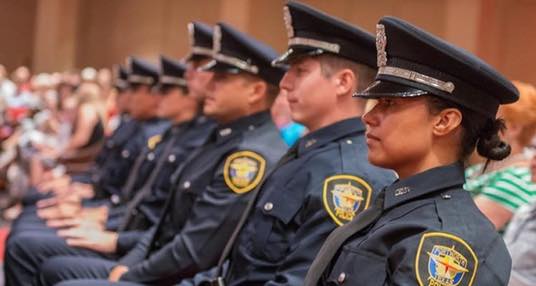
There’s an old saying about the futility of slamming the barn door after the horse has already absconded. It accomplishes nothing. That’s how I somewhat feel about the new federal initiative, Operation Relentless Pursuit, which is going to be aimed at fighting violent crime in Cleveland and six other cities around the country: results are usually ephemeral.
Cleveland has violent crime rates that are about four times the national average and only a fool would be opposed to any efforts to bring those numbers down. A $71 million federal grant will be split among the seven cities, but not necessarily evenly. The amount awarded to each city will be determined by what the city has requested and how city officials plan to use the cash infusion.
Fifty million dollars is earmarked to put more local officers on the streets of Albuquerque, Baltimore, Detroit, Kansas City, Memphis, Milwaukee and Cleveland, which is a good thing, although multiple studies have concluded that reducing poverty is a surer way of reducing crime.
The funds are called a “COPS Grant” and $50 million is being set aside for the hiring of new police officers, according to U.S. Attorney for the Northern District of Ohio, Justin Herdman, while the remaining $21 million is to be used for overtime and equipment — both of which cops love.
“Every city involved has a significant problem,” said ATF Special Agent in Charge, Jon McPherson. “Our role is to identify the trigger pullers involved in violent crime.”
That’s the part where the horse has already left the barn. When the trigger has been pulled usually someone has been wounded or perhaps killed. My wish would be for some of the $71 million to be used to prevent the gun from being used — even picked up — in the first place.
Imagine how much could be accomplished if, say, 10% of the funds were dedicated to real crime prevention: Channeling identified young people, beginning at puberty if necessary, away from lives of crime. The simple fact is, we already know which ill-raised 13, 14 and 15-year-olds are candidates to eventually grow up and embrace street life — with all of the negative consequences and violence.
As a society, we could, if we so desired, construct intervention programs for many of these youth — ones that do not include incarceration. It’s really no mystery.
But the current thinking is still similar to how we dealt with drug epidemics. When it was blacks bitten by the crack bug, the solution was always more incarceration. But when it became whites who got infected with addiction to pills and heroin, it quickly became a social service issue, not a criminal one, and dollars began to flow into solving the problem.
Don’t get me wrong. I’m all for getting violent young men — black, brown or white — off the street and placed where they can do no harm to society. But if we don’t address the “cradle-to-prison pipeline” all we’re doing is arresting one generation of youthful gangsters while we wait for the next one to come of age so that we can arrest them too. It’s never-ending until we approach the problem from a different perspective.
Hey, here’s a potential solution: let’s pretend all of the young people in need of guidance, mentoring and assistance are white.

One Response to “MANSFIELD: Let’s Just Pretend”
Alphabet
Again, excellent article Mansfield!
It took this long to comment on the article because I wanted it to be at least 3 or more substantial paragraphs to prove to you and your readers how intelligent I am. I finally overcame my bull so here goes.
An equal part of the funds should be invested in programs designed to TEACH elementary and junior high school children in the Hood and other financial disadvantaged neighborhoods the NEGATIVE psychological and physical effects that regular use of drugs and alcohol. Because by far, that is the cause of most of the destruction: young people under the Influence with a gun in their hand.
You see it on cop shows and on the news, young people going to jail for 20 and 30 years because of using a gun Under The Influence!! As they say, Because I Got HIGH!!
Finally, I don’t see any of that money being used to help, I see police getting better pay and more efficient killing machines. No social programs to bring cops and community together.